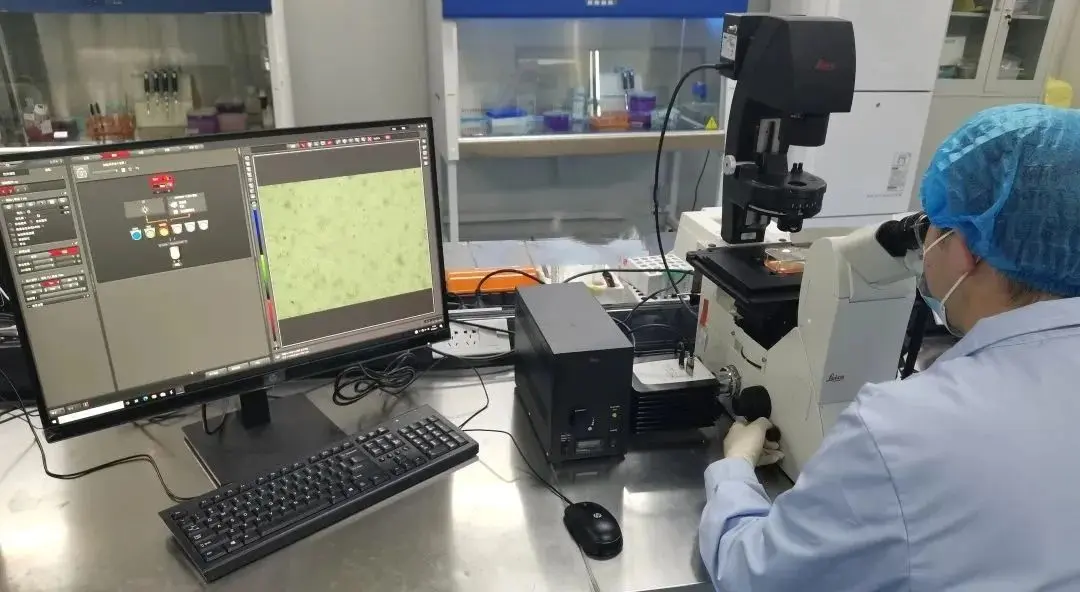
ISO 10993 In Vitro Cytotoxicity Testing
In vitro cytotoxicity testing uses cell cULture techniques to determine:
- Cell death (e.g., cell lysis)
- Cell growth inhibition
- Colony formation
- Other effects on cells caused by medical devices, materials, or their extracts.
In the biological evaluation system of medical devices, in vitro cytotoxicity testing is one of the most important indicators. It helps evaluate the potential cytotoxicity of medical devices and biomaterials. Before these devices are used on living tissues or cells, in vitro cytotoxicity testing serves as a simulated experiment to pREDict the biological response. The method is econoMICal, simple, and allows for batch testing, which makes it an essential screening tool for deciding whether animal testing is necessary.

Evaluation Criteria
In vitro cytotoxicity assays can be categorized based on endpoint measurements:
- Morphological assessment of cell damage
- Measurement of cell damage
- Measurement of cell growth
- Measurement of specific aspects of cell metabolism
Solutions
JJR Lab in China has years of experience in cytotoxicity testing, with a comprehensive testing system for both medical devices and biomaterials. Cytotoxicity testing methods are generally divided into:
1. Quantitative Cytotoxicity Testing
2. Qualitative Cytotoxicity Testing
Quantitative Cytotoxicity Testing: MTT Assay
Principle:
The MTT assay is based on observing cell metabolic activity. MTT is a yellow water-soluble reagent that is reduced by viable cells into a purple-blue formazan. This formazan is then dissolved in isopropanol, and the optical density is measured using a spectrophotometer. The number of viable cells is directly proportional to the optical density.
Reference Standards:
- iso 10993-5:2009 — Biological Evaluation of Medical Devices – Part 5: Tests for In Vitro Cytotoxicity
- ISO 10993-12:2021 — Biological Evaluation of Medical Devices – Part 12: Sample Preparation and Reference Materials
- GB/T 16886.5-2017 — Biological Evaluation of Medical Devices – Part 5: In Vitro Cytotoxicity Test
Notes:
The laboratory sample collection method typically uses extraction liquid for testing. The appropriate extraction ratio should be selected based on the sample's characteristics and thickness, followed by further cutting of the sample if necessary.
Qualitative Cytotoxicity Testing: ISO Method
Principle:
Medical device extracts are cultured with cells, and biological reactions are observed under a microscope. Evaluation includes assessing:
- Cell morphology
- Vacuolation
- Cell detachment
- Lysis
- Membrane integrity
These aspects are followed by a rating to determine the cytotoxic effect.
Reference Standards:
- iso 10993-5:2009 — Biological Evaluation of Medical Devices – Part 5: Tests for In Vitro Cytotoxicity
- GB/T 16886.5-2017 — Biological Evaluation of Medical Devices – Part 5: In Vitro Cytotoxicity Test
Qualitative Cytotoxicity Testing: USP Method
Principle:
This method examines the effects of leachates from elastic or polymeric materials (which directly or indirectly contact the patient) on cell morphology, to determine the biological reaction of the extracts.
Reference Standards:
- USP-NF <87> — Biological Reactivity Tests, In Vitro: Elution Test
Cytotoxicity testing requires extensive preparation, including reagents like culture media and cells. Since cell growth takes time, the testing cycle can be lengthy and may affect the scheduling of tests.
JJR Lab has extensive experience in in vitro cytotoxicity testing. We can adjust preparation times and schedule testing efficiently, aiming to provide the best possible quality control services to our customers.
Our in vitro cytotoxicity testing team consists of highly skilled professionals who can customize testing methods according to your specific needs. We operate to the highest quality standards and are committed to delivering professional, reliable quality control services.
Email:hello@jjrlab.com
Write your message here and send it to us
 What Are the Testing Items of California Propositi
What Are the Testing Items of California Propositi
 E-Cigarette EU TPD Testing
E-Cigarette EU TPD Testing
 Testing Certification for E-cigarettes Exported to
Testing Certification for E-cigarettes Exported to
 What is Amazon US CPC Certification?
What is Amazon US CPC Certification?
 UK Toy Safety Regulation Standard EN 71-13
UK Toy Safety Regulation Standard EN 71-13
 What is EU UFI Registration?
What is EU UFI Registration?
 EU UFI Registration for E-cigarette E-liquid
EU UFI Registration for E-cigarette E-liquid
 How to get the MSDS Report for Electronic Cigarett
How to get the MSDS Report for Electronic Cigarett
Leave us a message
24-hour online customer service at any time to respond, so that you worry!




